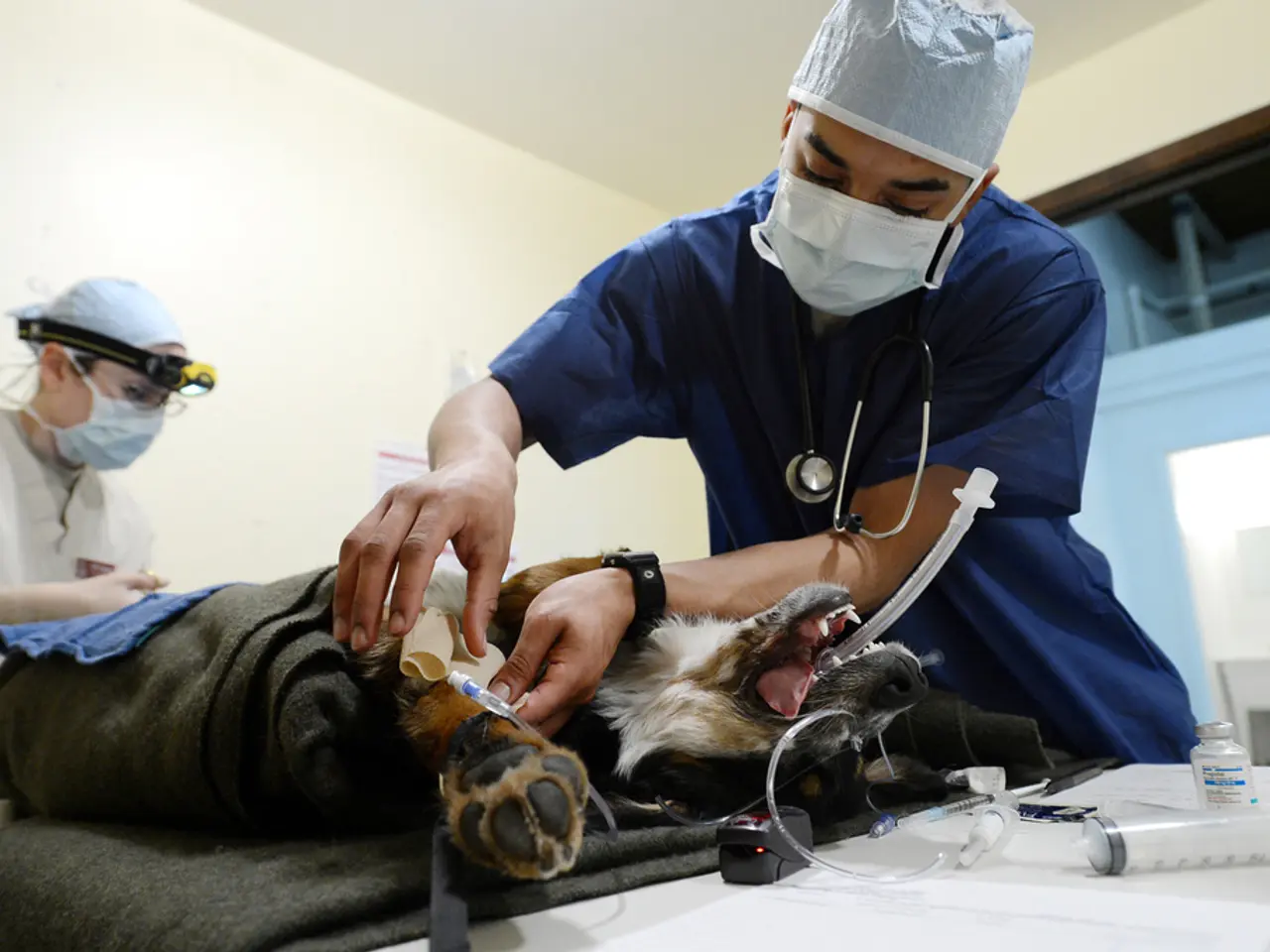Fatal Infectious Outbreak Hits Children in French Town
Butchers in France face closure due to a string of child illnesses
In the quaint French town of Saint-Quentin, a sudden wave of illness sweeps through its community, leaving tragic consequences. Over a short span, multiple children fall prey to an infectious disease—one of them succumbing to their affliction. Authorities trace the root of the epidemic to two local butcher shops.
The town of Saint-Quentin, home to over 53,000 inhabitants, faces an unprecedented crisis after a series of cases involving children suffering from severe diarrhea. The tragedy culminates in the death of a 12-year-old child. Upon closer inspection, it is revealed that the majority of the affected kids had purchased meat from the implicated butcher shops, as the prefecture attested.
In the wake of this disaster, health authorities plead with the public to exercise caution, urging them to refrain from consuming meat products from the two affected shops until the exact culprit behind the contaminations could be definitively identified. The shops were shut down as a precautionary measure while investigators probed the origin of the meat and identified the nature of the bacterial contamination.
The afflicted children ranged in age from infancy to adolescence, with symptoms that included severe diarrhea. Among them, a staggering five developed Hemolytic Uremic Syndrome (HUS), a rare complication caused by gastrointestinal infections, the primary cause of which is the Shiga toxin-producing Escherichia coli (E. coli). The overall incidence of HUS in children is relatively low, with only 100 to 165 documented cases in France each year.
Noteworthy Contamination epicenter Links to butcher shops
Investigators believe that the contamination originated from the meat sold in local butcher shops. Fearing potential further contamination, food safety inspectors carried out raids, confiscating meat, marinades, and spices for laboratory testing. Though the precise source remains under investigation, the contamination appears consistent with meat from the local butchers. Additionally, the authorities dismissed the possibility of tap water contamination. Moreover, the cases showed no evidence of common exposure points, such as communal meals or shared venues, suggesting a multiplicity of potential exposure routes linked to the local meat supply.
The abovementioned outbreak primarily affected kids aged between 1 to 12 years old, who succumbed to the ravages of the gastrointestinal symptoms, with some progressing to kidney failure due to HUS. Given their immature immune systems, children are highly susceptible to the dangerous consequences of HUS, which can lead to lasting kidney damage or worse.
In essence, the tragic and preventable loss of life in Saint-Quentin underscores the urgency for vigilant public health and food safety measures to protect communities against harmful pathogens lurking in the local food supply.
Sources: ntv.de, als/dpa
- France
- Infectious Diseases
- Meat
- Children
- The community policy in Saint-Quentin urges citizens to prioritize their health and wellness, emphasizing the importance of cleanliness in the wake of the recent tragedy.
- Science plays a crucial role in addressing the outbreak, with experts working tirelessly to identify the bacteria causing the illness.
- As a preventive measure, many parents have started to advocate for vocational training in the food industry to ensure safe handling of meat products.
- Workplace-wellness programs are emphasized to educate employees on the dangers of ignoring basic hygiene protocols.
- Medical-conditions, especially those related to digestive health, become a focus point as health officials analyze the impact of the contaminated meat.
- Chronic diseases and certain cancers may be linked to consuming contaminated meat, raising concerns about long-term effects.
- Respiratory conditions, like asthma, could potentially be exacerbated by the bacteria, leading to further complications.
- Eye-health and hearing may also be at risk due to the possible link between bacterial infections and these conditions.
- Health-and-wellness coaches are being consulted to help children recover and address any long-term health implications.
- Fitness-and-exercise programs are encouraged to promote overall physical health and boost the immune system of those affected.
- Sexual-health services are alert for potential complications arising from weakened immune systems, reinforcing the importance of responsible sexual behavior and regular testing.
- Autoimmune-disorders may be triggered or worsened by the bacteria, leading to a call for more research and awareness around these conditions.
- Climate-change could potentially exacerbate future food-borne illness outbreaks, accentuating the need for sustainable farming practices.
- Manufacturing processes in the food industry must be closely scrutinized to prevent contaminations of this nature from recurring.
- Mental-health services are needed to support grieving families and those affected by the trauma of the outbreak.
- Mens-health initiatives are expanding their reach to ensure that men are aware of the risks associated with food-borne illnesses and take necessary precautions.
- Skin-care practices and treatments can help those affected by skin conditions caused by the bacteria.
- Therapies-and-treatments for bacterial infections are being developed and refined to combat similar outbreaks in the future.
- Nutrition plays a vital role in strengthening the immune system and aiding recovery.
- Aging populations are particularly vulnerable to food-borne illnesses, highlighting the need for stringent food safety measures.
- Womens-health services are collaborating with health officials to manage the impact of the outbreak on pregnant women and newborns.
- Parenting resources are being updated to include information on food safety and preventing bacterial infections.
- Weight-management programs are focused on helping those recovering from the illness regain a healthy weight.
- Cardiovascular-health is under scrutiny due to potential long-term implications from the bacteria on the heart.
- Industry leaders in the food and agriculture sectors are urged to take stringent measures to prevent such outbreaks in the future.
- Medicare programs are reviewing coverage for costly treatments related to the outbreak and potential long-term effects.
- CBD products, which possess reported antibacterial properties, may hold potential in future efforts to combat food-borne illnesses.
- Neurological-disorders, environmental-science, finance, energy, retail, public-transit, entrepreneurship, transportation, leadership, diversity-and-inclusion, automotive, small-business, investing, aviation, business, careers, housing-market, banking-and-insurance, fintech, real-estate, commercial, residential, stock-market, and space-and-astronomy are aspects that don't directly relate to the discussed food-borne illness outbreak, but are relevant to various aspects of modern society.








